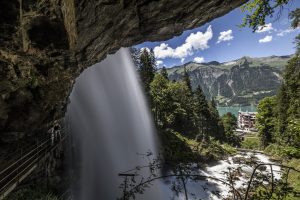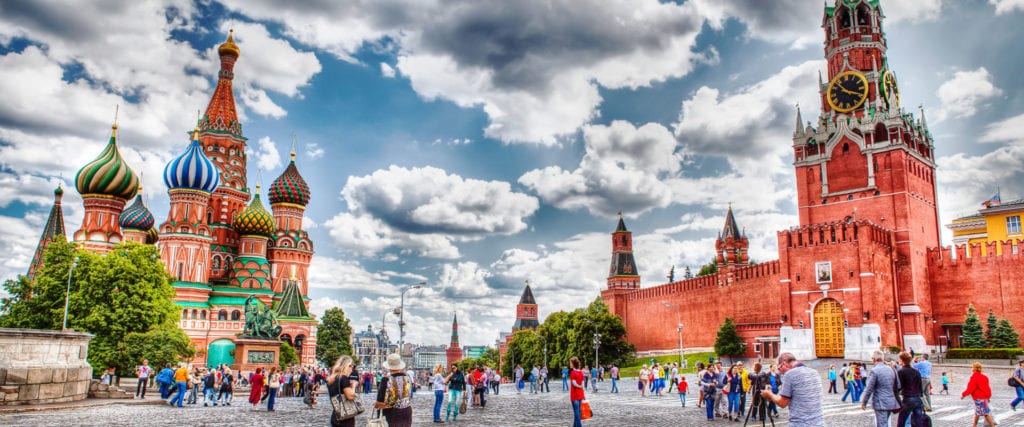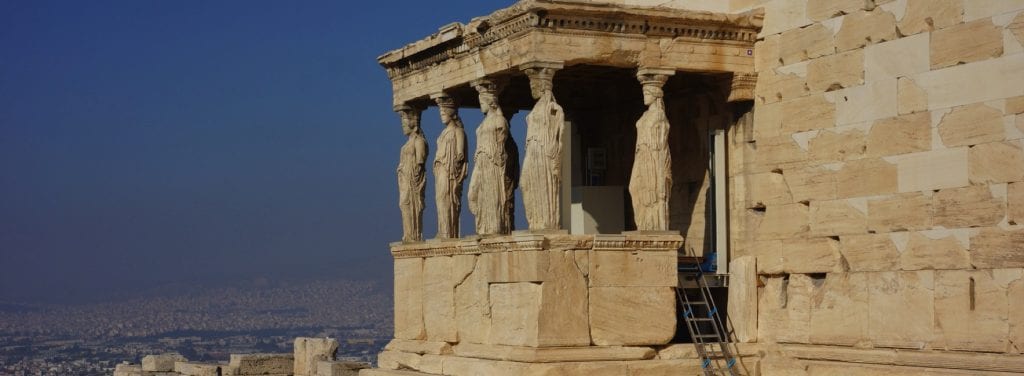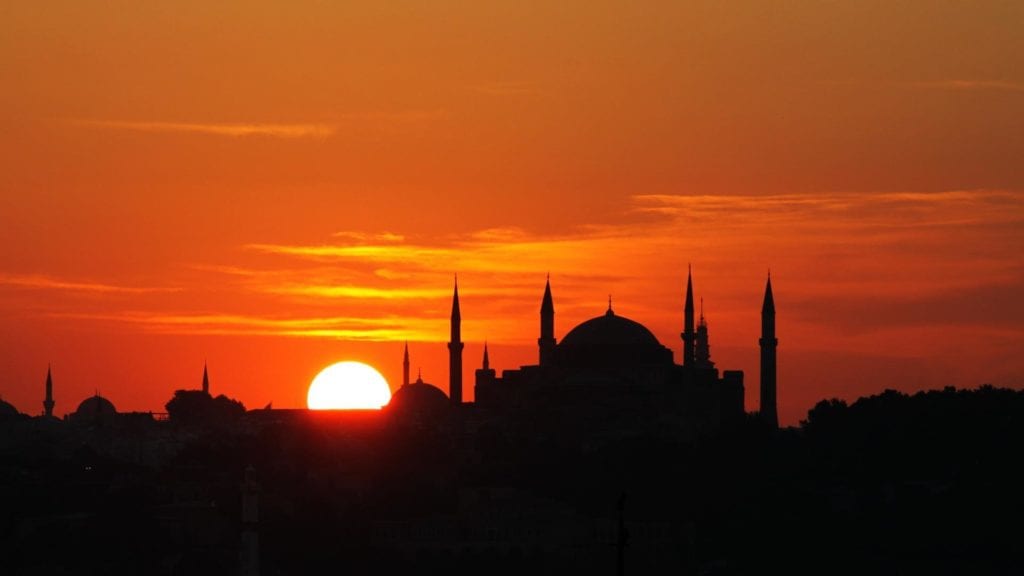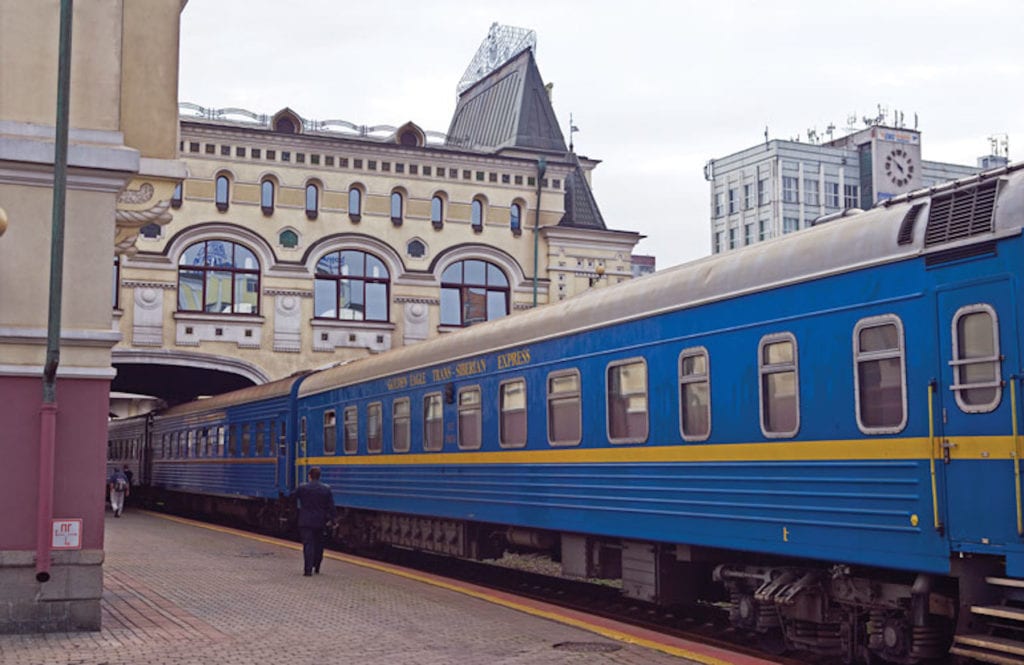
London to Moscow by Train
Before travelling to Russia by train, you need to obtain a Russian visa (single-entry) and a transit visa for Belarus, even though you are not actually stopping over in Belarus at all! There are many ways of obtaining the two visas you need, but I would recommend Real Russia ( www.realrussia.co.uk ), a London-based company that, as the name suggests, specialise in all things Russian and countries around Russia. In essence, they do all the leg-work and organise your visas for you, which of course would be time-consuming and potentially confusing to do yourself. You complete the online forms and then send your passport into them by Special Delivery (or take it there by hand if you can access their offices in Islington easily).
Day 1 – London to Berlin
It was a pleasant and civilised departure from London’s enormous St Pancras station as the 10:58 Eurostar glided out of the station and into the tunnel that takes it underneath the urban sprawl of north London. After a brief stop at Ebbsfleet to allow other passengers to join us, we continued through the Kentish countryside, zooming through Ashford and into the tunnel.
On emerging at Calais, there was to be no more sea to traverse as the long overland journey to mother Russia was truly underway. At lunchtime we pulled into Brussels Midi station and I noticed through the right-hand windows the gleaming white German InterCity Express (ICE) train that was to be our next set of wheels.
A quick and easy transfer between adjacent platforms (down one escalator and up another) took me onto the ICE train and I settled in my seat as we sped through the east of Belgium and into Germany, where we stopped at Cologne. On disembarking at Cologne I had time for a quick look at the cathedral outside the station, and then back onto another ICE train for the evening ride across to Berlin. The sun was going down as I sat in the restaurant car and devoured a tasty meal washed down by a draft beer.
When I arrived at Berlin, I made my way across the road in front of the station and checked into the Amano Grand Central hotel. My room was ultra modern and extremely comfortable, and I decided to have an early night for an early start the following morning.
Tips of the day:
- Arrive in plenty of time for the Eurostar check-in. The official minimum check-in time is 30 minutes but allow 45 to 60 minutes in case of longer queues. With some ticket-types, you will have to check in with a human being rather than scanning your ticket on the automatic gates.
- Don’t worry if you have a 20-minute connection in Brussels – these trains are designed to connect and many other passengers will be doing the same thing. Just make your way promptly off the Eurostar and head down onto the main concourse for the onward journey.
- Look out for Frankfurt Hbf as the destination on the boards in Brussels. It will be in red font to denote it is an international train.
- When changing in Cologne, head out for a look at the cathedral by looking for the exit to Domplatz (Cathedral Square) – its a truly spectacular sight and such a shame not to see it when you’re right next door. Don’t stray too far though, as you’ll be in danger of missing your onward connection!
- Have dinner in the restaurant car on the way from Cologne to Berlin. The restaurant car is rarely full and provides decent-standard dinner options with draft beer and some palatable German wines. Make sure you take your most valuable belongings with you, however, as the train may well stop at a station while you’re eating.
- Be careful to alight at the correct Berlin station. Usually the train stops at Berlin-Spandau (which you don’t want), Berlin Hauptbahnhof (main station – get off here!!) and then a further station that is usually either Gesundbrunnen or Ostbahnhof. I’ve heard stories of people not paying attention and ending up at the terminus station, after a long day of travelling from London.
Day 2 – Berlin and on to Warsaw
I have been fortunate enough to visit Berlin a few times, but to me the walk from the station down to the Brandenburg Gate is truly special, passing the Reichstag with its Norman Foster-designed glass dome. This was a perfect morning stroll, after a hearty breakfast in the hotel, making sure of course that I was back at the hotel in time to check out and head over to the station for my next train shortly after 12:30pm, the Berlin-Warszawa Express.
For this journey I had a seat reserved in the rear-most carriage of the train, which is an open-coach rather than compartments. The carriage wasn’t at all busy and I actually sat in a different seat to the one reserved for me, taking up a table for 4 all to myself! It was quite a walk to the restaurant car, but fortunately I had taken some snacks and drinks to keep me going after my substantial breakfast earlier!
After the forests of east Germany, the train crosses the Oder river and into Poland. The countryside is not particularly interesting but it passes by serenely as you enter the industrial city of Poznan, then continuing into Warsaw where you arrive at Centralna station just after 6:30pm.
Just a short walk along the wide boulevard in front of Warsaw Centralna station is the Polonia Palace Hotel. This is ideal for the station, as are other similar properties such as the Marriott, Novotel or Residence St Andrew’s Palace. Knowing that I had more time in Warsaw to follow the next day, I had dinner in the bar and read my handy Warsaw guide that the reception staff gave to me when I checked in.
- Get up at a reasonable time and take a walk through Berlin. It’s a fantastic city and you won’t regret it!
- Arrive at Berlin Hbf in plenty of time to take your connecting train to Warsaw. It is likely to leave from one of the upper platforms on the top level (this will make sense once you’re there!).
- Take snacks and drinks – you are now entering Eastern Europe, where the reliability of restaurant cars being operational cannot be 100% guaranteed. Assume the worst, that there isn’t a restaurant car and take basic provisions.
Day 3 – Departing Warsaw on the train to Moscow
Preparing for the journey
Bearing in mind that the journey to Moscow was to take over 18 hours, and having taken many different long-distance trains overnight trains in the past, I knew it was key to stock up on supplies for the trip. Opposite Warsaw’s large and functional Centralna station is a Carrefour Express (similar to Tesco Metro or Sainsbury’s Local). There is also a large supermarket in the shopping centre next to the station, but as I was by myself, I didn’t want to venture through an enormous supermarket with my suitcase in tow. The Carrefour had everything I needed, and I headed to the station armed with ample supplies for the journey ahead.
Boarding the train
The train is marked Moskva-Belorusskaya on the boards at Warsaw Centralna station. Escalators lead down from the main concourse area down to the platforms, so happily there are no stairs to negotiate. It isn’t particularly clear whereabouts on the platform to wait for your particular carriage, but the train stops for at least 7 minutes so you have time to locate your carriage. The provodnitsa (attendant) of each carriage in their Russian railways uniforms step off the train from their particular carriage and can advise which carriage to board at, if its not their particular carriage you’re booked in.
Given that it was only myself and a handful of other travellers waiting on the platform, I can’t imagine that the Polish capital is particularly high on the bucket-list of Russian travellers and vice-versa not huge amounts of Poles heading to Moscow in their droves. The vast majority of the passengers on board are Russian – the particular train that I boarded had originated in Paris, although there is a daily service known as the “Polonez Express” that leaves from Warsaw each evening, originating at the city’s Western Station (or Zachodnia, as it is known).
Settling into the compartment
The provodnitsa showed me to my compartment, which was essentially a 4-berth compartment that was booked out for my own exclusive use. Other compartments along the carriage had up to 4 occupants, so it was a mixture of families, couples, groups of friends and precious few western tourists like me!
I was swiftly offered a complimentary tea by the provodnitsa who then attempted on more than one occasion to sell me the ornate mug in which it came, an offer I politely declined.
Through eastern Poland
The fields and plains of eastern Poland stretched out before me, and I read my book, keeping an eye on the stations until we reached Terespol. This is the border-town on the Polish side, where Polish border guards get on for a cursory check of passports. They were not particularly interested in me, although they did turf off a couple of people who were suspected of smuggling.
Crossing into Belarus: Customs checks and gauge changes
The train then trundles on slowly but surely over the Bug River that marks the border between Poland and Belarus. After a few hundred yards of Belarusian territory, the train comes to a stop at a “station” that is used solely for the purpose of border-guards. Due to an agreement between Russia and Belarus, these Belarusian border-guards also complete Russian immigration formalities, so there wasn’t any interruption as the train passed from Belarus into Russia, which is just as well, as this was about 4am! During the passport control, passports are taken away by the Belarusian officials and checked. You will be told to complete an immigration card and you must keep this in your possession until you leave Russia at the end of your trip.
After border control, the train makes its way to the engine sheds for a bogie-change. The gauges in the former USSR countries are different to those of continental Europe, hence the wheels need adjusting to continue the journey. This all happens coach-by-coach and while you are on board the train, quite an experience in the gathering dusk of a Belarusian evening.
Through Belarus and into Russia
The train carries on to Brest, the entry-point into Belarus and the former USSR, where it stops for a while, then continues towards Minsk later on. I settled into bed and got some sleep as the train made its way through Belarus, disturbed briefly at Minsk with station announcements at an ungodly hour, but generally the night’s sleep was not too bad. I woke up the following morning after passing the town of Smolensk. Although there is a Belarusian restaurant car attached, I had supplies from the previous day’s shopping in Warsaw to sustain me for breakfast.
Shortly after 10am and bang on time, the Paris-Moskva Express arrived into Belorusskaya station in western Moscow, some 1,800 miles from London St Pancras where I started.
Simon’s top tips for the journey:
- Prepare for the Warsaw-Moscow journey. Buy some drinks, snacks and sandwiches – although there is a restaurant car it doesn’t attach until Brest (Polish-Belarus border)
- Learn basic Russian phrases and try to swot up on the Cyrillic alphabet
- Take a pen to fill out the immigration card at the Poland-Belarus border
- Don’t feel pressured into buying a souvenir tea mug from the on-board staff unless you fancy buying one! They are quite expensive but are a great memento of the trip.
- Pre-book a meet-and-greet transfer in Moscow if you’re unsure about negotiating the Moscow metro and its Cyrillic alphabet signage on arrival.
Check out our holiday to Moscow and St Petersburg by train.




